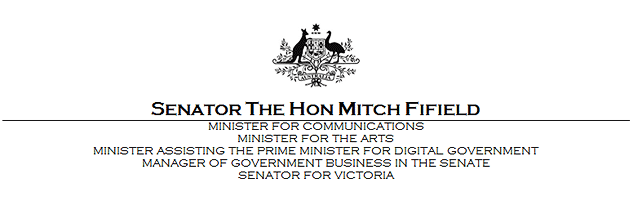14 December 2015
Children studying in regional and remote Australia will soon have access to dedicated broadband capacity outside of their home broadband quota – and faster download speeds on the nbn ‘Sky Muster’ satellite, Minister for Communications Mitch Fifield announced today.
Launched into space in October this year, the ‘Sky Muster’ satellite will help bridge the digital divide for school children learning remotely and will also provide high-capacity broadband service to more than 250,000 homes and businesses when it begins transmitting in the first half of 2016.
“Children studying via distance education in regional and remote areas of Australia have been struggling with inadequate broadband services, putting them at a disadvantage compared to their metropolitan counterparts,” Minister Fifield said.
“One of the Coalition Government’s goals for the nbn satellite broadband service is to vastly improve access to distance education for young Australians, and as a result, their education will be given an extra boost by increased download capacity in addition to their home broadband quota.
“Giving children studying in regional and remote Australia access to additional high-speed broadband for educational purposes allows them greater opportunities to expand their knowledge and explore their creativity.
“Sky Muster will transform educational access for the most isolated students and ensure the Coalition Government’s $2 billion investment in satellite broadband is put to its greatest possible use,” Minister Fifield said.
nbn intends to propose a 50GB data allowance per student per month to a maximum of three students per location, with eligibility to be confirmed with relevant Education Departments.
Last year, the Government set nbn the task of developing a dedicated port for education and other ‘public interest’ uses such as e-health that could deliver content separately and not eat into monthly data allowances. The Coalition Government also established a Distance Education Working Group consisting of the Federal Department of Communications and Department of Education, executives from nbn’s Satellite team and State and Territory Education Departments.
As each State and Territory Government provides distance education services and funding according to their own policy commitments, pricing and subsidy arrangements for users will be a matter for States and Territories.
The group was tasked with developing an nbn Long-Term Satellite Service (LTSS) strategy allowing users access to distance education services on the LTSS without impacting their home broadband quota.
The current Interim Satellite Service (ISS) established by the former Labor Government seriously under provisioned the ISS. Falling well short of the intended delivery speeds to 250,000 households, the service only had capacity to serve a fifth of that 48,000 households leaving frustrated customers plagued by connectivity issues, dropouts and slow speeds, making access to distance education services virtually impossible.
In contrast, the high-capacity Sky Muster satellite is expected to cover more than 250,000 homes and businesses. The education port will be available at commercial launch and nbn continues to advance plans for other innovations such as multicasting and distributed caching.
The Government has also directed nbn to develop similar products to assist remote health delivery and support other vital community services.

